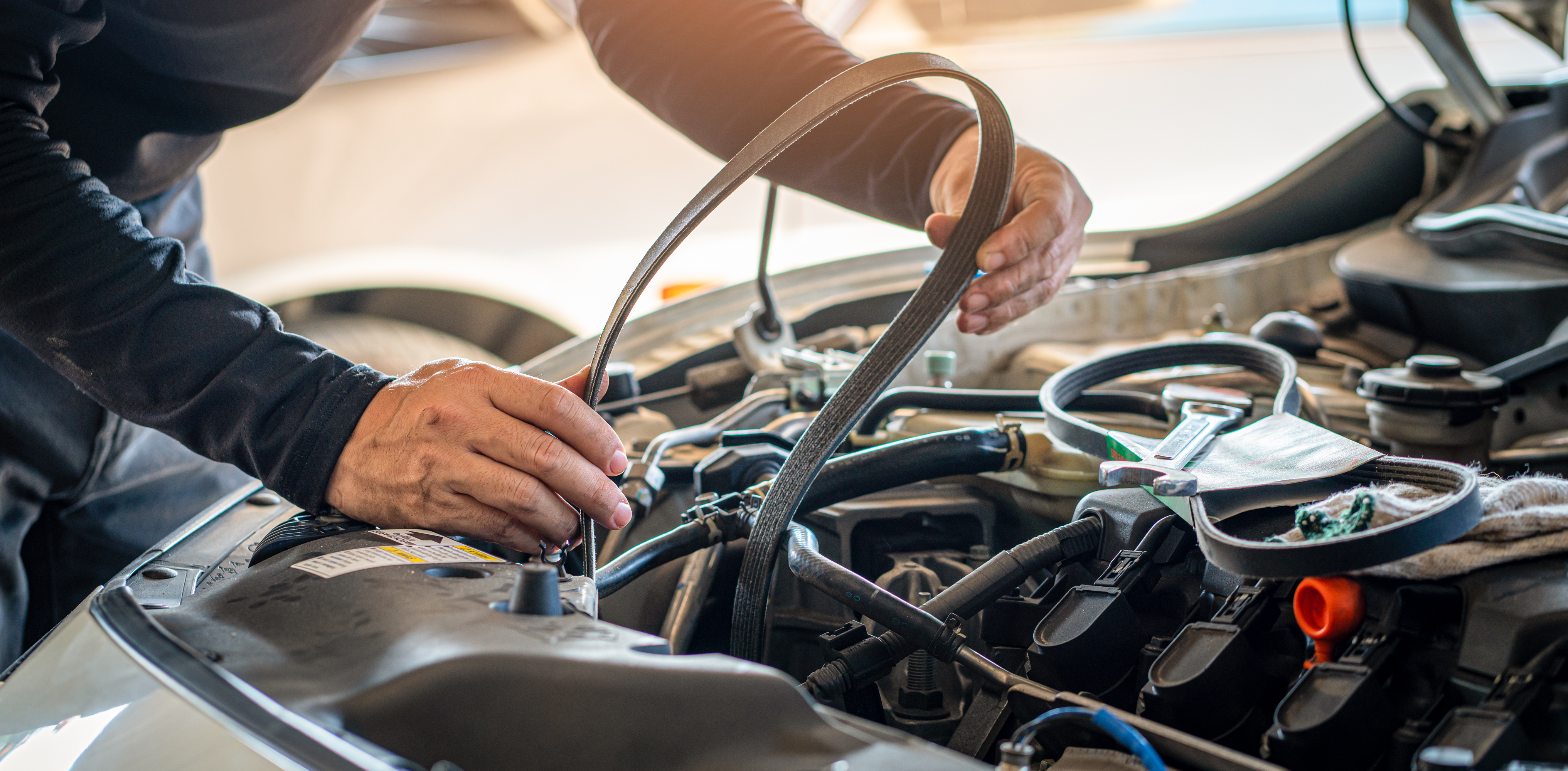

Timing is everything! That’s especially true when it comes to engines. Let’s look at timing belts for traditional internal combustion-powered engines and why it is especially important to replace yours according to the manufacturer’s schedule.
What is a timing belt?
Inside the front of your engine, there’s a component that’s either a timing belt, or a timing chain. They both serve the same function, but they’re made of different materials. And while belts aren’t as common as they used to be, if your engine has one, you need to factor in some preventive maintenance.
A timing belt connects an engine’s camshaft(s), which controls valve action to the crankshaft, which then controls piston movement. The belt wraps around the camshaft and crank pulleys in such a manner to coordinate the movement of the engine’s valves and pistons so that everything opens, closes, moves up and down at precisely the right time.
There are two types of engines that use timing belts – “interference” and “non-interference.” The difference lies in the proximity between the valves and the pistons. If the timing belt slips or breaks on an interference engine, a piston can contact an open valve causing serious damage to both. And that spells M–O–N–E–Y. Non-interference engines will usually not self-destruct. In either case, if the timing belt fails, the engine will immediately shut down, leaving you stranded – possibly in the middle of traffic.
Carmakers often use belts instead of more durable chains because chains are noisier and cost more to manufacture. However, belts have a limited lifespan. A timing belt should be replaced at the manufacturer's suggested interval regardless of its visual condition, but it's a good idea to have it inspected every 10,000 miles or so.
When it’s time to replace the timing belt, the manufacturer may also recommend the replacement of other parts, such as the water pump or timing belt tensioner. This isn’t to pad your invoice! Since the timing belt would have to be removed to access these parts, the additional cost to replace them is negligible compared to doing these jobs separately.
It’s also important to repair any engine oil or coolant leaks. Rubber timing belts can degrade with higher–than–normal engine temperatures or contact with motor oil and antifreeze. The life expectancy of a timing belt is considerably lower in hot or leaky engines.
Change the car’s timing belt before something goes wrong
Timing belts are replaced proactively because they can’t be easily examined for wear. Many people skip replacing the timing belt because it can cost hundreds of dollars to have this work done. But ignoring this specific maintenance task can be a big mistake.
Your timing belt is one of the most critical components in your engine. Check your vehicle’s maintenance schedule and follow the manufacturer’s recommendation on when to replace it. Otherwise, the old one could wear out and break with potentially catastrophic engine damage. And nobody wants that.
Not an ALLDATAdiy customer? Learn how a subscription could help you. ALLDATAdiy provides access to repair information on over 44,000 engine-specific vehicles, find yours. Return to see more DIY Helpful Tips.







